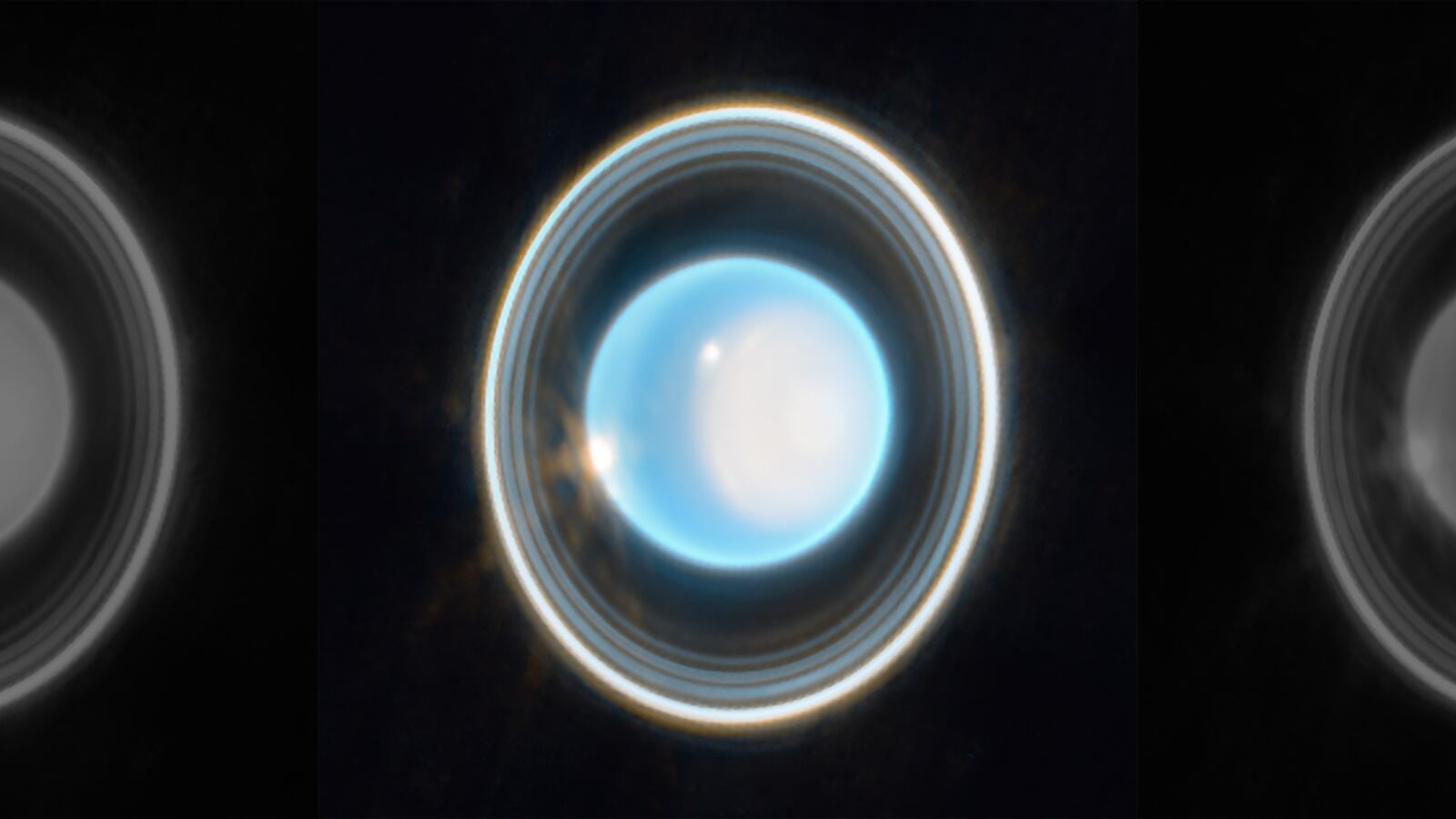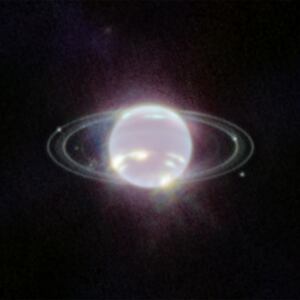NASA’s James Webb Space Telescope was designed to peer into the farthest reaches of the known universe—as far back as to the earliest known galaxies to ever be formed.
But it has quickly become a go-to tool to catch a new glimpse of objects just around the corner from us. Remember that electric photo of Neptune and its rings taken last year?
Webb has followed up with something even better: a brand new pic of Uranus (pun completely intended).
It’s an incredible new view of the most famous planet to rotate at a 90-degree angle, looking like a bright blue marble, with its normally dusty and faded rings appearing lit up like fluorescent bulbs.
The new image here, taken by Webb’s Near-Infrared Camera (NIRCam), combines data collected between blue and orange filters.
Webb was also able to take a look at some of Uranus’s 27 known moons. Most are too small to observe from so far away, but the telescope managed to identify some of the brightest in neighborhood.

Older images of Uranus, most famously ones taken by Voyager 2 decades ago, made the seventh planet from the sun look like a pale, blue-green world. Here, Webb’s new prowess shows off Uranus’s vibrant atmosphere and its huge polar cap.
This isn’t the only big Webb photo to drop this week. On Friday, the agency also unveiled a new image of Cassiopeia A (Cas A), a remnant of a supernova that exploded 340 years ago, about 10 light-years in size and located 11,000 light-years away from Earth. The detail in this image is unparalleled, showing the mix of gas and dust in the region like a multicolored fireworks display.

Cassiopeia A.
NASA, ESA, CSA, D. D. Milisavljevic (Purdue), T. Temim (Princeton), I. De Looze (Ghent University).Cas A isn’t just eye candy for us. Supernovae like this are responsible for helping to spread heavy elements throughout the universe—including elements critical to life, like iron and calcium. Got good bone health? Thank a supernova for that.







